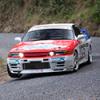Reprogramming R32 Gtst Ecu's
Announcements
-
Similar Content
-
Latest Posts
-
Absolutely matters because, while a temperature change will eventually reach a sensor at the end of a static line, the response time is far far far too slow to be useful. Might as well not have a temp gauge at all.
-
When I was eyeing off the 370GT (after deciding I didn't want to spend 30-40k+ to relive my early 20s in an R33) I thought it'd be a good project to add a turbo to it. Now that I have a 370GT, and I've had a couple of chances to open it up, I'm pretty stunned by how much power it makes 🫠 Honestly, the way the VVEL opens it up, it almost feels like there's a little turbo tucked away in there somewhere. It's like Nissan looked at VTEC and said "hold my beer" 😁 Has anyone thrown a turbo into their 370Z or 370GT? Is there a conservative boost level you can run without having to upgrade the fuel system, or are bigger injectors and a bigger pump a given?
-
Well, this, but braided line to the sender that is mounted on the chassis. Oil Pressure doesn't need to be close, while I prefer Oil Temp is in the active oil flow (bro science, not sure how much it matters). That's how I've had mine set up for years and it works OK





Recommended Posts
Create an account or sign in to comment
You need to be a member in order to leave a comment
Create an account
Sign up for a new account in our community. It's easy!
Register a new accountSign in
Already have an account? Sign in here.
Sign In Now